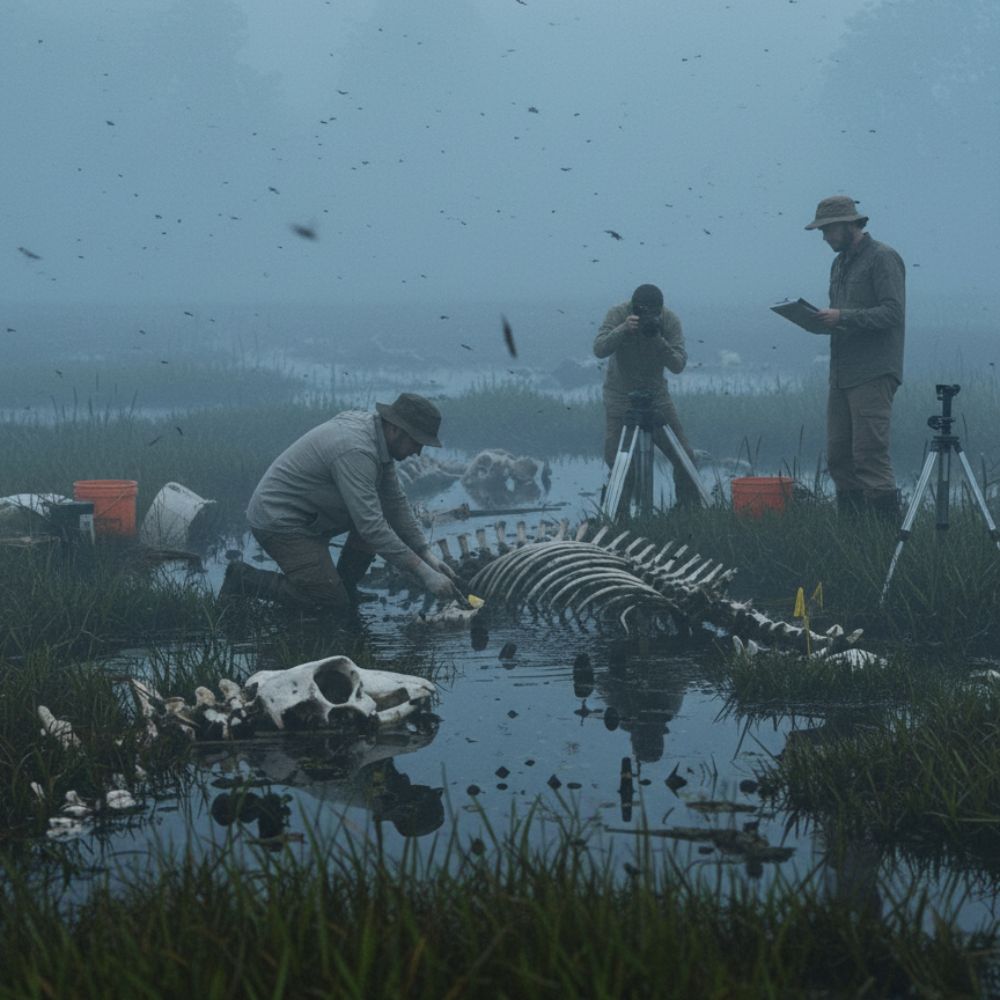Unearthing Secrets in the Misty Marshes of the Okavango Delta: A Paleontological Expedition

The year was 1988. Dr. Alistair Finch, a man whose tweed jacket seemed permanently fused to his frame even in the sweltering heat of Botswana, peered through his mist-streaked spectacles. He stood at the edge of a vast, ethereal landscape within the Okavango Delta, a place where water and land danced in an eternal, shifting embrace. The morning fog, thick and cool, still clung to the reedy channels, painting the world in shades of muted grey and verdant green.
“Remarkable,” he murmured, adjusting the wide brim of his canvas hat. His junior colleague, the eager and ever-observant Dr. Lena Petrova, knelt by the skeletal remains of what appeared to be a massive bovine, its rib cage half-submerged in the shallow, dark water. Swarms of tiny, buzzing insects, an omnipresent feature of the Delta, danced above the scene.
Their expedition wasn’t for gold or lost cities, but for something far older and more profound: a glimpse into the Pleistocene past of this magnificent ecosystem. Local reports, initially dismissed as folklore, spoke of a “bone bog” – a place where the earth held onto its dead with an unusual tenacity. Alistair, a paleontologist with a nose for the improbable, had followed the whispers.
What they found exceeded all expectations. Scattered across several acres of the marsh, preserved by the unique anoxic conditions, lay dozens of complete or near-complete skeletons. Not just isolated bones, but entire articulated frames of ancient buffalo, prehistoric wildebeest, and even a species of giant antelope previously only known from fragmented fossil records further north. It was a graveyard laid bare by the gentle ebb and flow of the Delta’s annual flood cycle.
Lena carefully brushed away sediment from a vertebrae, her gloved hands precise and methodical. “The preservation is incredible, Alistair. Look at the dental wear on this skull. We’re looking at multiple generations, a catastrophic event perhaps, or a gradual accumulation over millennia.”
Alistair nodded, pulling out his field notebook. “The dating will be crucial. If we can establish a timeline, we might piece together the climatic shifts that led to such a concentration. Was it a drought that drove them to these water sources, only to become mired? Or a predator trap?”
For weeks, the small team, aided by experienced local guides who knew every twist and turn of the Delta’s intricate waterways, worked tirelessly. They mapped, photographed, and carefully extracted specimens, battling the humidity, the ever-present insects, and the sheer logistical challenge of working in such a remote and waterlogged environment. Each exposed rib, each ancient femur, was a paragraph in a story billions of years in the making.
As the sun began to break through the mist each morning, casting long, dramatic shadows across the water-filled channels and the stark white bones, the Okavango Delta revealed its secrets. It was a testament to both the brutal indifference of nature and its incredible capacity for preservation. Dr. Finch and Dr. Petrova, along with their dedicated team, were not just excavating bones; they were resurrecting the ghost herds of a forgotten Africa, bringing their silent stories into the light, one carefully cataloged specimen at a time. The misty marshes, once just a local legend, were now etched onto the paleontological map of the world.
